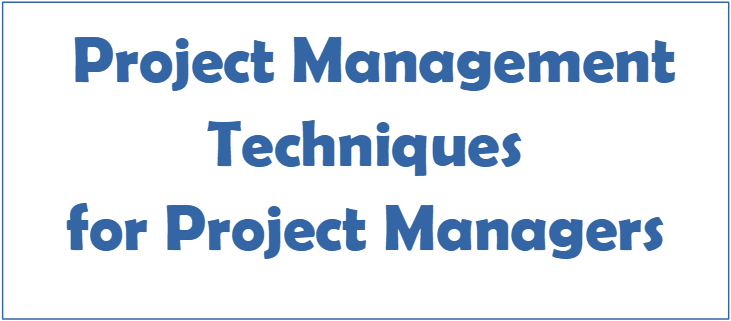Kanban Project Management
What is Kanban project management?
This article will explain what Kanban method in project management.
Table of contents:
- Just-in-time and Kanban system, the basis of Toyota production system
- Kanban method of project management
- Incorporating Just-in-time into the Kanban method
- Project management tools for realizing the Kanban method
- Summary
Just-in-time and the Kanban system, the basis of the Toyota production system
It is too well-known that the Kanban method was originally born from the Toyota production system. I’ll explain a little bit here to organize the information.
In the first place, the idea of just-in-time is the basis of the Kanban method. This means what you need, when you need it, as much as you need, and it is also a basic concept for efficient production.
In the case of a product consisting of more than 30,000 parts, such as an automobile, a precise production plan is necessary in order to produce in large quantities and efficiently. Excessive or insufficient inventory of even a single part can result in production delays and unnecessary costs.
In other words, by supplying “what you need (parts) when you need them, as much as you need” for a precise production plan, you can achieve manufacturing without “unreasonableness, waste, and irregularity.” The Kanban method realized this concept.
In the Kanban system, communication between the front-end process and the back-end process is of utmost importance. The post-process orders the required number of parts, and the pre-process supplies them. This prevents unnecessary dropping and shortage of parts and enables smooth production.
Kanban is important for these processes. Kanban is like a purchase order that includes the part name, part number, required process, and required number. The post-processes can pass the Kanban to the pre-processes at the appropriate time to ensure smooth parts supply.
Mr. Taichi Ohno, former vice president of Toyota, who invented the Kanban system, said that he got the idea from the product management of supermarkets.
So how does the Kanban system, originally used in the manufacturing industry, get involved in project management?
Kanban method in project management
If you have only understood the Kanban system in the Toyota Production System, you may still have difficulty visualizing the Kanban system in project management. Therefore, I will explain the Kanban method in project management using the example of personal task management.
If you want to complete a small project by yourself, you can easily divide the whiteboard vertically. On the left is “To-Do,” in the middle is “Doing,” and on the right is “Done.”
Next, prepare sticky notes and write down the tasks needed to complete the project. Let’s assume you have ten tasks to do here. First, paste all sticky notes with tasks into the “To-Do.” Then select a high-priority one, move it to “Doing,” and paste it. Finally, when you complete the task, paste it into “Done.”
When all tasks are moved to “Done,” the project is complete. Managing your project this way gives you an intuitive idea of what you’re doing, what’s left, and what’s done. It also has the effect of organizing the current tasks and re-planning after that.
This visualization is the basis of the Kanban method in project management.
Incorporating Just-in-time into the Kanban method
I explained the Kanban method in project management above, but it is still not a perfect Kanban method. Although it is good to be able to visualize, it does not have the just-in-time concept of what you need, when you need it, and only when you need it.
By the way, just-in-time in project management means “to process the necessary tasks at the necessary time and in the necessary amount.”
In the example I mentioned earlier, you are the only resource for the project. Even if you try so hard, you will probably be limited to processing up to two tasks at a time. Nevertheless, if you move many tasks from “To-Do” to “Doing,” you will run out of resources, and the project management will become complicated, and it will not progress smoothly.
On the other hand, if there are fewer tasks in “Doing,” you will fall behind the project.
So set the upper and lower limits of “Doing” as two tasks and pull the task from the “To-Do.” This way, you can make the most of your resources while making reasonable progress on your project.
In this way, the Kanban method is realized for the first time by incorporating just-in-time ideas in project management. As you may have noticed, the Kanban method can also help you manage resources and average the load on your team members.
Project management tools for the Kanban method
In this article, I have tried to explain the Kanban method as clearly as possible, so I have used three simple components: “To-Do,” “Doing,” and “Done.” However, a full-fledged Kanban system has a more complex column structure as follows:
- Goals
- Story queue
- Elaboration & acceptance
- Development
- Test
- Deployment
- Done
The above is an image of the Kanban system in a software development project. As you can see, the actual Kanban system is complex because it requires a surprisingly large number of processes to process a single task.
Managing such a complex Kanban system with a whiteboard or even Excel has its limitations. The larger the project scale, the more pronounced this tendency becomes, and the more difficult it will be to manage the project using the Kanban method.
Therefore, we implement a project management tool to realize the Kanban method. Project management tools are IT systems with many features to help you manage projects correctly, making complex project management a lot easier and more efficient.
Complex column structure can also be modified to match the nature of the project, allowing for optimal management relationships for the project.
In addition, project management tools allow for communication between stakeholders on the system. Project management tools allow collaboration with all stakeholders: management, department heads, project managers, project leaders, members, outsourcers, and customers.
The project management tools are also required for the steering committee, where the vendor managers and customer managers review each phase.
As you can see, communication in a project can be as complex as the number of software involved, so integrating it with a project management tool can help ensure smooth interactions.
Summary
The Kanban system was born in Toyota and has spread throughout the manufacturing industry. By adopting this Kanban method in the project management field, you can achieve smooth project progress. However, it is important that the project manager and all team members have a deep understanding of the Kanban method, and at the same time, implement a project management tool to deepen the understanding of the Kanban method and aim for optimal project management throughout the organization.


